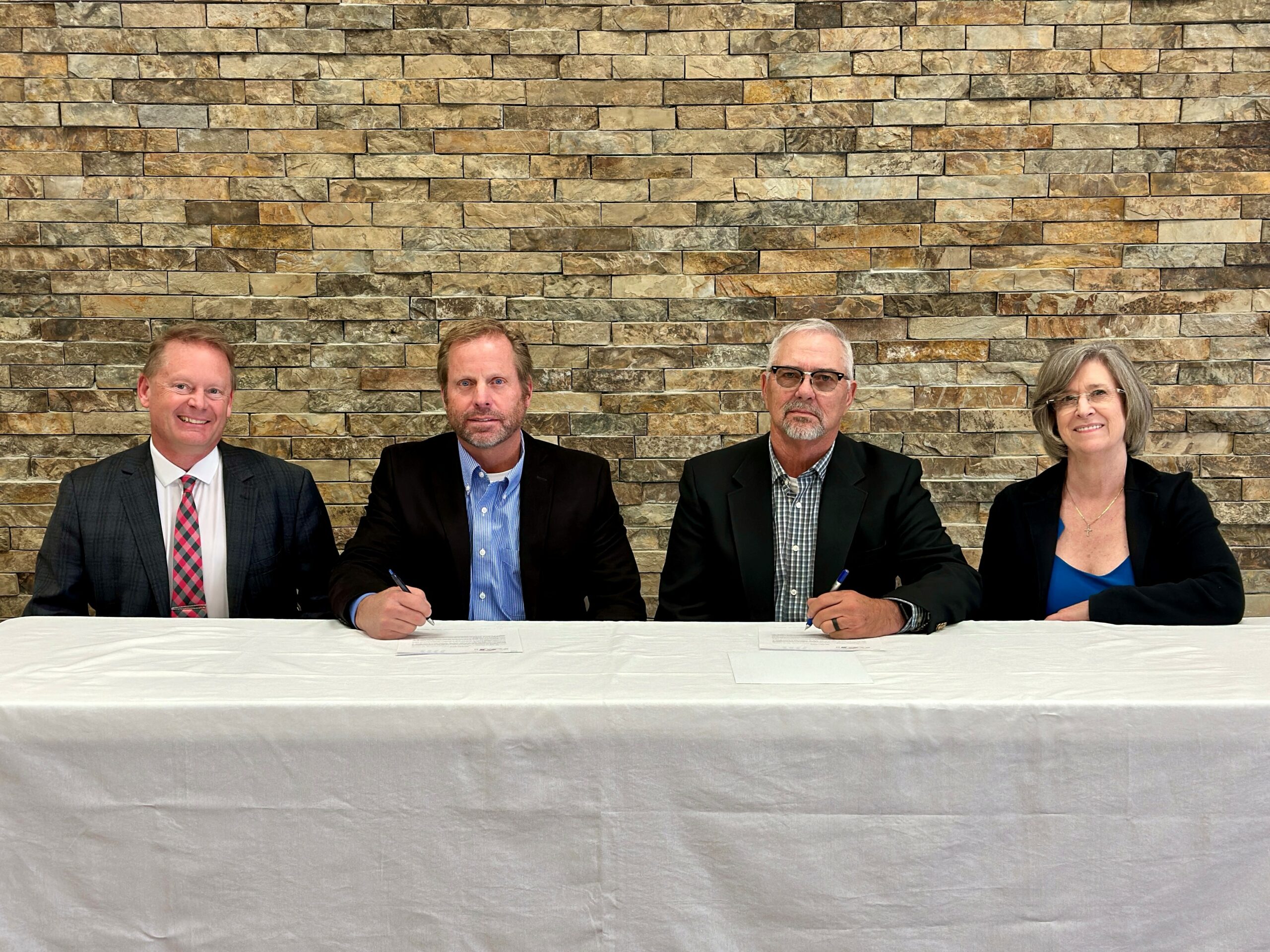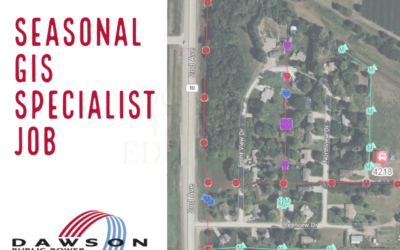
From left: CNPPID General Manager Devin Brundage, CNPPID Board President Dave Rowe, DPPD Board President Pat Hecox and DPPD General Manager Gwen Kautz.
The formation of PRPPID brings together complimentary operational focuses of retail electrical distribution, renewable power generation and irrigation water distribution. Bringing them together in a single entity under a shared governance and administrative structure will further maximize this fit. This ensures that hydropower — and other potential future electrical generation technologies — can directly benefit the area’s irrigation delivery service customers and its retail electrical customers, the owners of this public entity.
“The directors should be applauded for their vision and ability to work in the best interests of all stakeholders,” said Pat Hecox, Dawson PPD’s board president.
Dave Rowe, president of Central’s board of directors, said, “The unique operational portfolio that results from the consolidation ensures that we are involved in initiatives that enhance economic development built on the foundation of two of Nebraska’s most vital resources: water and power. This will strengthen our area and offer advantages that will increase in the future, just as those who built these districts envisioned.”
The new district will align hydropower generation during the irrigation season with peak demands for power, maximizing the value of the water used by its irrigation customers while providing reliable energy for groundwater irrigators with electric pumps, agricultural industries and homes. As a single entity, PRPPID will be uniquely positioned to conjunctively manage these resources to benefit surface and ground water irrigators, energy customers, recreationalists and other stakeholders ultimately improving the sustainability of surface water supplies.
Gwen Kautz, Dawson PPD’s general manager, said, “Two years of detailed research have gone into this endeavor. The data, the synergies and the commitment to making central Nebraska stronger are all there.
“Equally important was the dedication of our department managers to make sure we dotted our i’s and crossed our t’s throughout this process. They work in this industry daily, can see the challenges ahead and knew we would handle them better together. We know there is much more work ahead and pledge to pursue it with the same commitment that led up to this historic decision.”
Devin Brundage, Central’s general manager, said, “How these resources and assets are leveraged to benefit us, and future generations, will be decided here in south-central Nebraska by those who have a real stake in them. Through providing benefits of irrigation deliveries in conjunction with low-cost, reliable electrical power and groundwater recharge, the Platte River Public Power and Irrigation District will positively influence virtually every part of daily life in this part of the state.”
As the final step in the process, the board-ratified consolidation plan will be submitted to the Nebraska Power Review Board, which will review the plan, hold a hearing and render a decision, potentially at its December meeting. Pending approval from the Power Review Board, it is estimated the new public power and irrigation district will officially come into being in July 2023.
Background
The consolidation is the culmination of more than two years of analysis and consideration by board members, management, and staff from the two districts that started with a phased study by Power System Engineering (PSE), a Wisconsin-based consulting firm that provides industry-leading engineering, economic, and planning solutions to utilities of all types.
Phase One of the process consisted of meetings, inspections of facilities, data requests and an initial examination of both districts’ financial models.
With approval from both boards to move forward with the study, PSE examined a framework for potential governance of the new organization, and began an in-depth study of a financial model, workforce assets, and how Central’s hydroelectric generation would fit into Dawson’s retail distribution system. Phase Two also included joint board discussions guided by independent facilitators and forums with customers and stakeholders.
Satisfied by the results from Phase Two, the boards authorized advancing to Phase Three to study potential board representation, a plan for consolidation, an organizational framework for management and staff, the location for the organization’s headquarters and a name for the merged entity.
Central brings to the merged entity more than 107,000 acres that receive irrigation delivery service, hydroelectric generation at four power plants, groundwater recharge, recreational opportunities at its many lakes and reservoirs, and wildlife habitat associated with project waters. It owns and operates Kingsley Dam and Lake McConaughy, the storage reservoir that is the linchpin of the project that began operation in 1941.
Central’s administrative headquarters are in Holdrege, the Control Center that manages operation of the project is in Gothenburg and irrigation offices are located in Holdrege and Bertrand. The public in six counties elect representatives to Central’s 12-member board of directors.
Dawson PPD serves more than 23,000 electric meters and maintains more than 5,800 miles of power lines in south central Nebraska, along the Platte River Valley. It was organized in 1937.
Dawson PPD is one of the larger rural systems in the state of Nebraska. The District is a member of the National Rural Electric Cooperative Association, the Nebraska Generation & Transmission Cooperative and the Nebraska Rural Electric Association. The District is guided by an 11-person board of directors elected by voters in the area it serves, including all of the rural areas in Dawson and Buffalo Counties, approximately two-thirds of Gosper County, a third of Lincoln County and parts of Custer, Sherman and Frontier Counties. The District also serves several villages: Hershey, Maxwell, Brady, Farnam, Eustis, Elwood, Eddyville, Smithfield, Overton, Sumner, Miller, Riverdale, Amherst, Odessa and Pleasanton. Dawson PPD does not serve customers within the cities of North Platte, Gothenburg, Cozad, Lexington, Elm Creek, Kearney, Gibbon, Shelton or Ravenna.
The District’s headquarters is located in Lexington and service centers are located in North Platte, Gothenburg, Sumner, Ravenna and Kearney.
Dawson PPD purchases electricity from Nebraska Public Power District and distributes it to customers in the area. During the summer months, as our energy sales peak, it purchases supplemental power from the Western Area Power Association’s federally-owned hydroelectric generators.
OTHER NEWS
Seasonal GIS Specialist job
LEXINGTON, Nebr. -- Dawson Public Power District has a job opening for a Seasonal GIS Specialist. A full job description and application details are available here.
3 ways to help limit tree trimming & removal
Did you know electric utilities are required to trim and remove trees and other types of vegetation that grow too close to overhead power lines? Here’s how you can help.
Why energy efficiency matters
Dawson PPD, along with its wholesale partner Nebraska Public Power District, is committed to maximizing the value of their energy purchases in a cost-effective manner. To understand its importance in all of our future, we need to examine where energy efficiency began.



